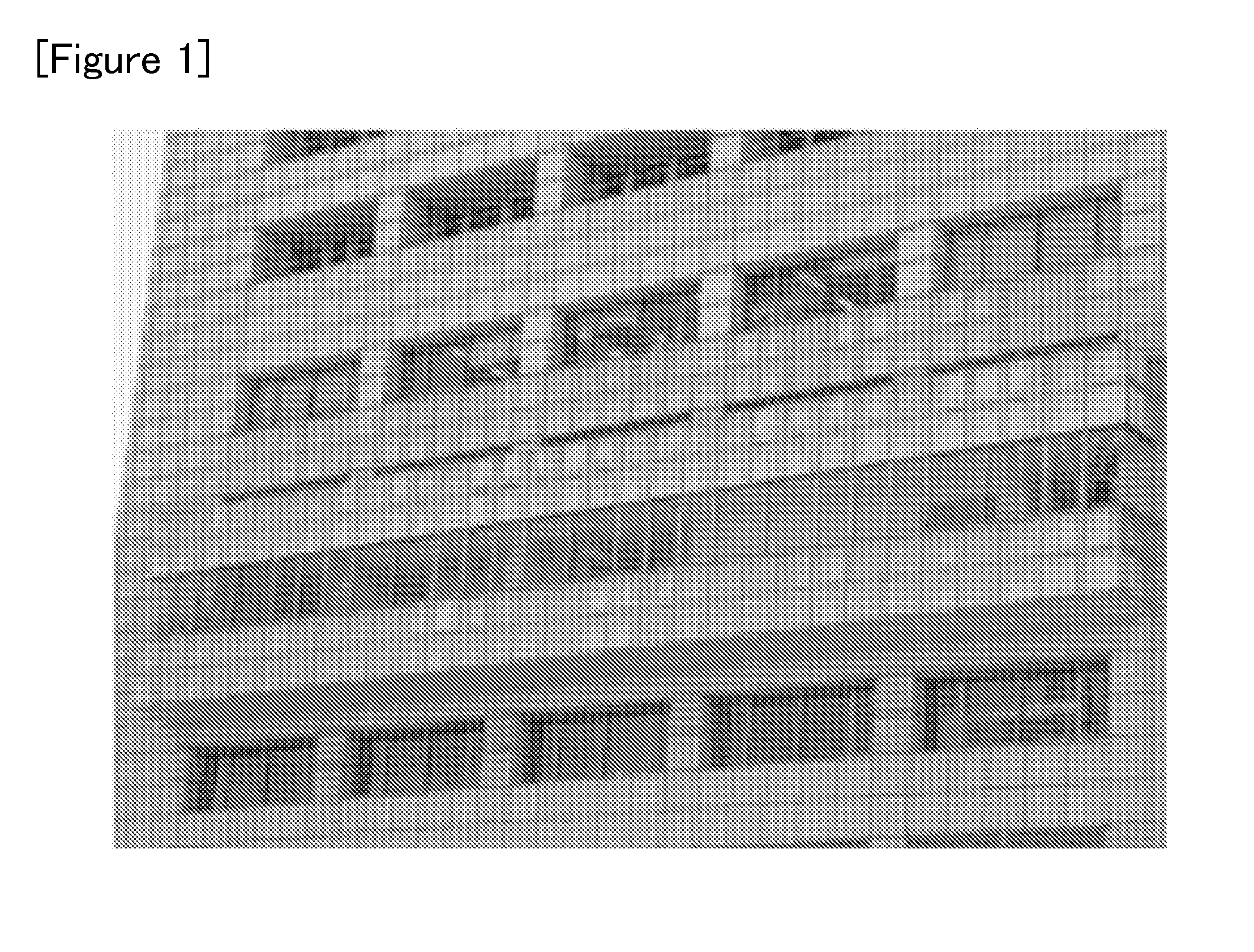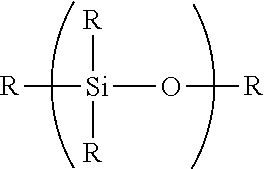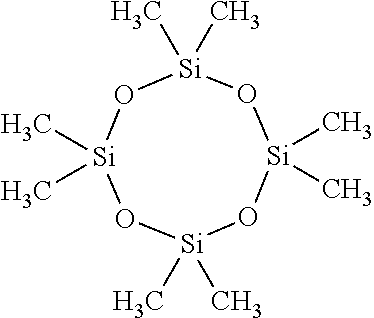Cleaning agent for washing out silicone stain
- Summary
- Abstract
- Description
- Claims
- Application Information
AI Technical Summary
Benefits of technology
Problems solved by technology
Method used
Image
Examples
example 1
[0094]To 4 mL of water, 100 μL (8×10−2 M) of D4 compound, which was a cyclic silicone compound, was added. The mixture was stirred. Further, sodium surfactin or SDS, i.e. sodium lauryl sulfate, was added thereto in the concentrations shown in Table 1. The mixture was stirred again and the emulsion status of D4 compound was observed. The emulsion status was checked by irradiating a mixed aqueous solution with light and measuring the absorbance of light having a wavelength of 620 nm. A higher absorbance indicates that D4 compound was dispersed more finely and was in an emulsified state. The obtained results are demonstrated in Table 1.
TABLE 1ExampleSodiumSurfactantsurfactinComparative exampleExperimentconcentration[absorbanceSodium lauryl sulfateNo.[mM]at 620 nm][absorbance at 620 nm]10.0010.050.0220.0050.200.0230.0100.300.0440.0500.700.0450.1000.700.0460.2500.900.0470.5000.900.0480.7500.900.0391.0000.500.02102.5000.500.04115.0000.200.03127.5000.200.051310.0000.100.021425.0000.100.03
[...
example 2
[0097]A silicone sealant (“DOW CORNING (registered trademark) 791 SILICONE WEATHERPROOFING SEALANT” produced by Dow Corning Corporation) was applied to a glass plate having a size of 150 mm×70 mm, and then the applied plate was left at rest under a condition of 23° C. and 50% RH for 10 days. Subsequently, a cycle of applying water with a shower for 5 minutes followed by heating within a dryer at 50° C. for 55 minutes was repeated four times in order to generate a silicone stain from the silicone sealant. The resultant was used as a silicone-stained glass plate.
[0098]Cleaning liquids were prepared by dissolving sodium surfactin (SF) in water, ethanol (EtOH), acetone, isopropanol (IPA), a 20 v / v % aqueous solution of ethanol, a 20 v / v % aqueous solution of acetone or a 20 v / v % aqueous solution of isopropanol in a concentration of 1.0 wt %. Each cleaning liquid was put in a commercially available sprayer container, and 3 mL thereof was sprayed to a central portion of the silicone-stai...
example 3
[0106]A silicone sealant (“DOW CORNING (registered trademark) 791 SILICONE WEATHERPROOFING SEALANT” produced by Dow Corning Corporation) was applied to an aluminum plate, and then the applied plate was left at rest in a condition of 23° C. and 50% RH for 10 days. Subsequently, a part of the silicone sealant was removed using a scraper while the other part of the sealant was left in a thickness of about 1 mm. The remaining silicone sealant was swollen with a commercially available limonene cleaning liquid, and then the removal surface was wiped with a rag. Subsequently, a rag was impregnated with an solution which was prepared by dissolving sodium surfactin in 20 v / v % aqueous solution of ethanol or a 20 v / v % aqueous solution of acetone in a concentration of 1.0 wt %, and the surface from which the silicone sealant had been removed was polished therewith for 30 seconds, followed by wiping with a rag impregnated with only the corresponding solvent. The contact angle of water was meas...
PUM
| Property | Measurement | Unit |
|---|---|---|
| Percent by mass | aaaaa | aaaaa |
| Percent by mass | aaaaa | aaaaa |
| Concentration | aaaaa | aaaaa |
Abstract
Description
Claims
Application Information
 Login to View More
Login to View More - R&D
- Intellectual Property
- Life Sciences
- Materials
- Tech Scout
- Unparalleled Data Quality
- Higher Quality Content
- 60% Fewer Hallucinations
Browse by: Latest US Patents, China's latest patents, Technical Efficacy Thesaurus, Application Domain, Technology Topic, Popular Technical Reports.
© 2025 PatSnap. All rights reserved.Legal|Privacy policy|Modern Slavery Act Transparency Statement|Sitemap|About US| Contact US: help@patsnap.com



